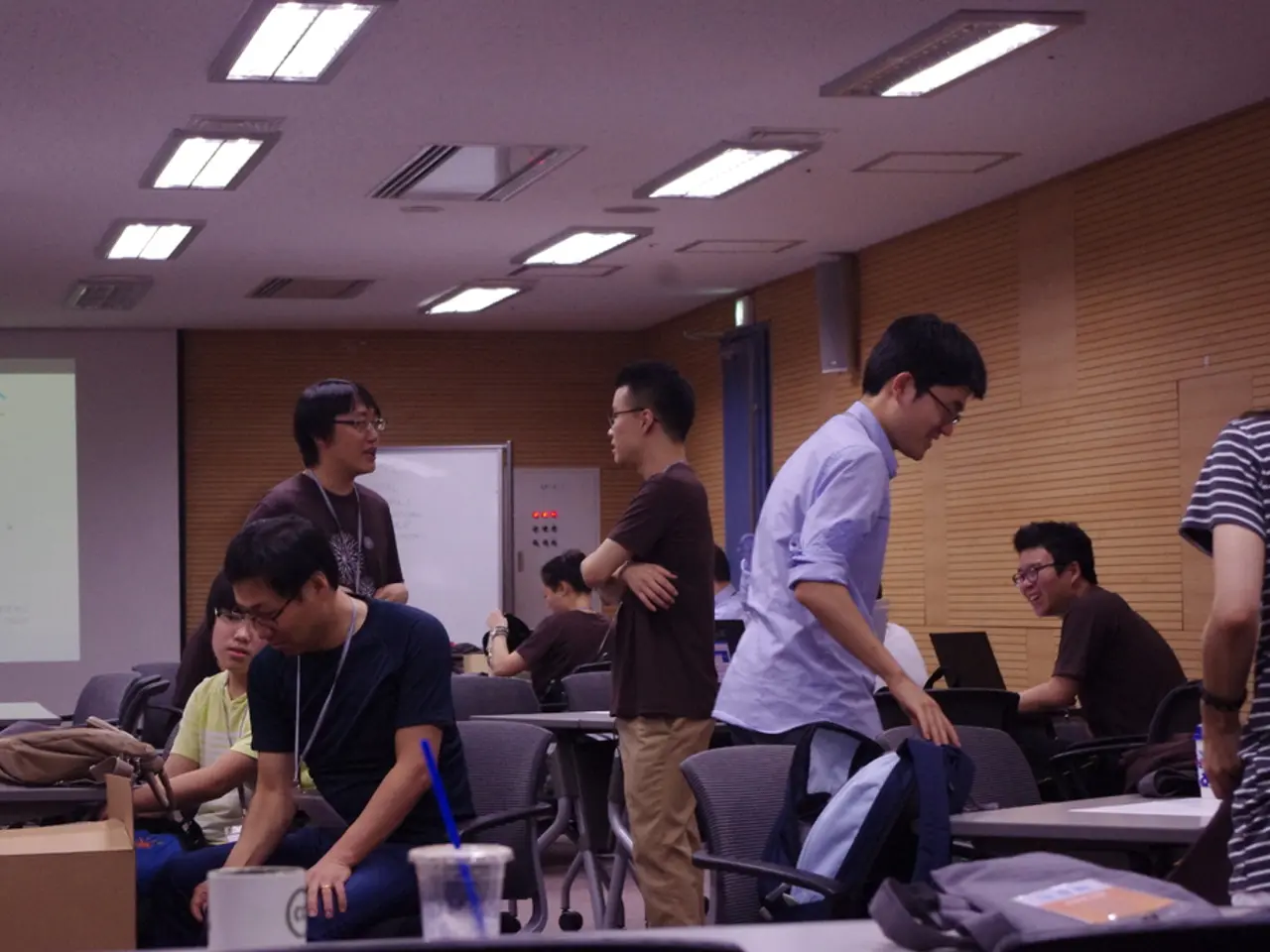Impact of Classmate Evaluations on English as a Second Language Education
In the realm of English as a Second Language (ESL) education, a revolutionary approach is gaining traction: peer feedback. This method, where students assess each other's performance or work, is proving to be a powerful tool in fostering language development, cognitive growth, and overall learning success.
A recent longitudinal study in a community college setting demonstrated the significant improvement in writing skills among students who participated in structured peer feedback sessions over a semester [1]. This positive impact is not confined to the written word; peer feedback encourages active engagement with the language, prompting learners to critically analyse and internalise language skills, thereby enhancing speaking and listening abilities [1].
Moreover, peer feedback fosters a collaborative and supportive learning environment, reducing language learning anxiety and increasing motivation [1]. This supportive atmosphere enables learners to express themselves more confidently and take more responsibility for their own learning, promoting autonomy and collaborative problem-solving around language issues [1].
The ongoing dialogue inherent in peer feedback also helps learners develop critical thinking and self-assessment skills, which contribute to lifelong language learning and cognitive growth [1]. Interestingly, both the giver and the receiver of feedback benefit: the giver deepens their understanding by evaluating peers’ work, which heightens their language awareness and reflection on their own language use [1]. The receiver, on the other hand, gains new perspectives, constructive criticism, and clarification through discussion, improving their communicative competence and understanding [1].
To make peer feedback even more effective, it can be integrated with frameworks like the Common European Framework of Reference for Languages (CEFR), which helps learners understand their current performance and set concrete goals [3]. This facilitates meaningful self-assessment and reflection, reinforcing self-regulated learning strategies.
As technology advances, personalised and adaptive learning tools are being developed to provide more tailored feedback that aligns with individual learning styles and needs. Furthermore, artificial intelligence and machine learning evolve, they offer the potential to supplement peer feedback with automated systems that provide instant language use analysis [2].
However, challenges persist, such as potential for biased or inaccurate feedback due to varying levels of language proficiency and students' reluctance to provide feedback for fear of offending peers [2]. To address these issues, creating a supportive environment, emphasising the importance of constructive criticism, and using anonymous feedback methods are proposed solutions [2].
Teachers play a crucial role in monitoring students' progress through regular assessments and comparing the performance of those who engage in peer feedback with those who do not [2]. The implementation of peer feedback involves careful planning, structure, and sensitivity to ensure that it delivers the desired outcomes without creating unnecessary stress or inaccuracies [2].
The peer feedback process consists of Pre-feedback Activity: Setting objectives and training students on feedback protocols, Feedback Session: Students exchange feedback using structured forms or guidelines, Post-feedback Reflection: Students reflect on the feedback and plan for improvement, Follow-up: Teachers assess progress and make adjustments as required [2].
With technological integrations and growing participative learning models, the future of peer feedback in ESL learning is poised for growth. Using metrics such as improved test scores, enhanced language fluency, and increased student engagement, teachers can continue to refine and adapt their strategies to ensure the feedback process remains beneficial and effective.
In conclusion, peer feedback in ESL settings acts as a catalyst for deeper cognitive processing, improved communication skills, increased motivation, and stronger language proficiency for both feedback providers and recipients [1][3]. It offers benefits that encompass linguistic, social, and cognitive aspects of learning, transforming ESL learning into a more interactive, engaging, and effective process.
Peer feedback not only encourages learners to critically analyze and internalize language skills for better speaking and listening abilities, but also fosters a supportive learning environment that cultivates self-assessment skills for lifelong language learning [1]. With the integration of frameworks like CEFR and the development of personalized learning tools, peer feedback can be further refined to suit individual learning styles and needs, fostering a more effective and engaging ESL learning experience [3].




